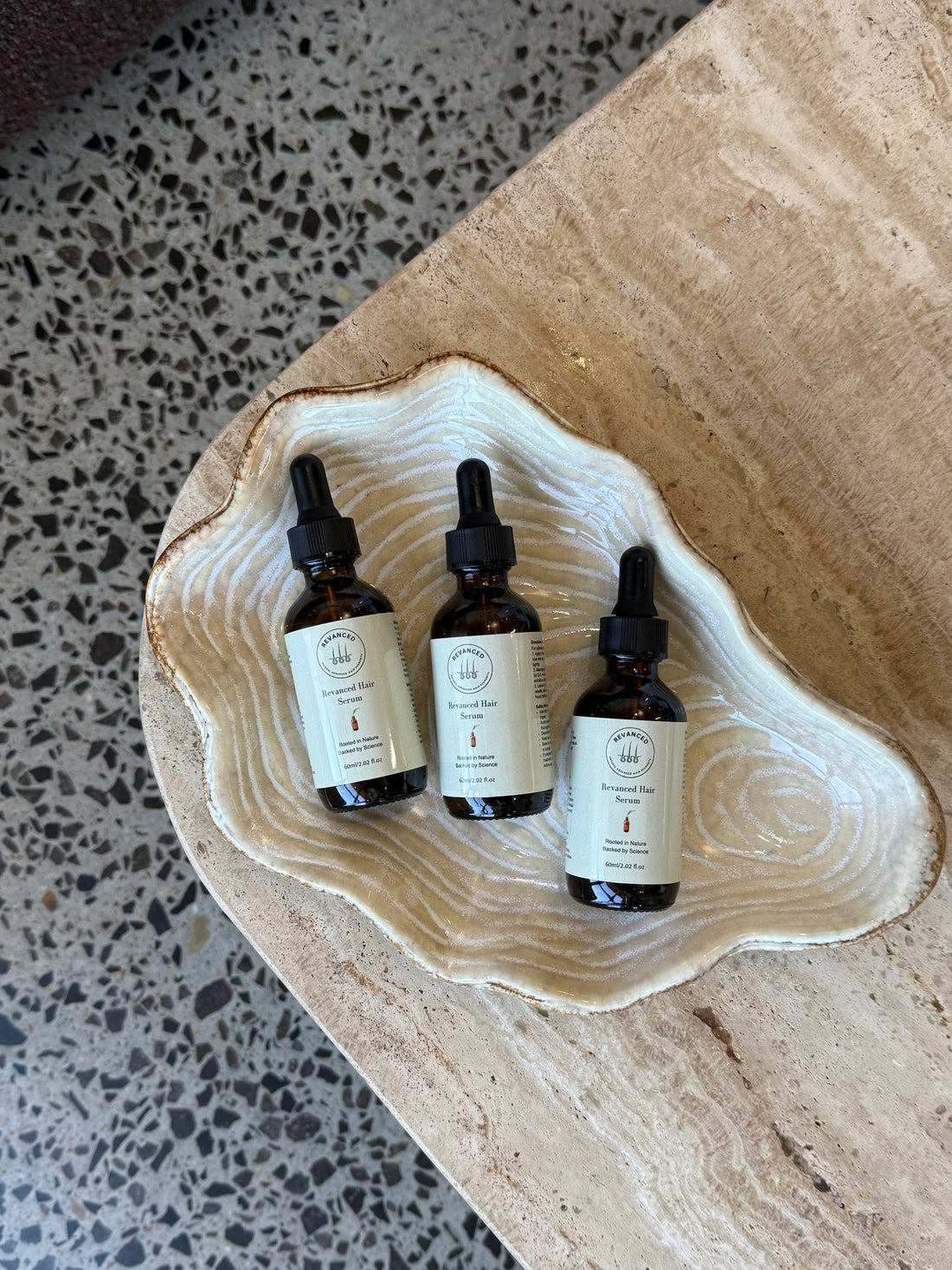
Natural DHT Blockers: What Works, What’s Scientific, and What to Avoid
Hair thinning and male or female pattern baldness are most often linked to a hormone called dihydrotestosterone (DHT). When DHT binds to receptors in the scalp, it shortens the hair growth cycle, causing follicles to shrink over time. The result is finer, weaker strands and eventually visible hair loss.
While prescription medications exist to reduce DHT, many people seek natural alternatives that deliver results without harsh side effects. The good news: several botanical extracts and nutrients have been studied for their ability to support healthy DHT balance and promote regrowth.
Below, we explore the most effective natural DHT blockers, what the science says, and which ingredients to avoid.
What Is DHT and Why Does It Matter?
DHT is a derivative of testosterone produced when the enzyme 5-alpha reductase converts testosterone into its more potent form. High levels of DHT in the scalp can miniaturise hair follicles, gradually shorten the growth phase of hair and lengthening the resting phase.
By reducing DHT activity, follicles are able to recover, producing stronger, thicker strands over time.
Proven Natural DHT Blockers
1. Saw Palmetto
- Why it works: Extracts from the saw palmetto berry have been shown to inhibit 5-alpha reductase, the same enzyme targeted by pharmaceutical drugs.
- Evidence: Multiple clinical studies have reported improved hair density and reduced shedding when used consistently.
- Best use: Topically in serums or taken orally in controlled doses.
2. Pumpkin Seed Oil
- Why it works: Rich in phytosterols, pumpkin seed oil can help reduce DHT binding in hair follicles.
- Evidence: A 2014 clinical trial found that men supplementing with pumpkin seed oil experienced significant increases in hair count compared to placebo.
- Best use: Topical serums applied after laser therapy or scalp stimulation.
3. Caffeine (from Green Tea or Coffee Extract)
- Why it works: Caffeine penetrates the scalp and has been shown to counteract DHT’s follicle-shrinking effects while also stimulating circulation.
- Evidence: Laboratory studies confirm caffeine can prolong the growth phase (anagen) of hair.
- Best use: As a topical solution, ideally after laser therapy for maximum absorption.
4. Rosemary Oil
- Why it works: Rosemary oil enhances circulation to the scalp and has demonstrated similar regrowth results to minoxidil in some studies, without the same irritation risks.
- Evidence: A 2015 study compared rosemary oil to minoxidil and found both groups improved, but rosemary users reported fewer side effects.
- Best use: Applied in diluted form as part of a well-formulated hair serum.
Ingredients That May Not Deliver
While many natural oils and herbal extracts are marketed as hair loss solutions, not all are supported by evidence. Heavy carrier oils (such as coconut or olive oil) may coat the scalp but often do little to address DHT directly. Similarly, synthetic “herbal” blends with fragrances or fillers can irritate the scalp and block follicle absorption.
When selecting a DHT-blocking product, focus on those backed by clinical data and proper formulation rather than marketing hype.
How to Maximise Effectiveness
The best results come when DHT blockers are combined with advanced hair stimulation therapies. Low-level laser therapy (LLLT), such as the Revanced 272 Pro Laser Helmet, primes the scalp by improving blood flow and cellular activity. Applying a targeted botanical serum immediately afterwards allows ingredients like saw palmetto, pumpkin seed, and caffeine to penetrate more effectively.
Consistency is key: hair growth cycles take time, and most users will notice visible changes within 10–12 weeks of steady use.
